This case study was contributed by the team at BIOS Lighting.
Project Overview
Memory Care Facility in San Antonio, Texas
The renovation includes 64-shared occupancy bedrooms, 8-single occupancy bedrooms, offices, a rehabilitation room, activity chapel, and beauty salon, as well as three (3) “neighborhoods” made up of household common space, living rooms, kitchen & dining areas, common bathing space.
The project is centered on the belief that the physical environment has a significant impact on the cognitive, emotional, and physical well-being of its inhabitants. Circadian lighting was a key strategy implemented to help support the goals of the project and provide wellness to staff and residents within the facility.
Design Team
Architect: LWDA Design – Christine Lucido, Ruth Neeman, Thomas Levi, Keith Bradley
Engineer: Cleary Zimmerman Engineers
Biological Lighting Experts: BIOS Lighting – Robert Soler, Erica Voss
Thoughtful Design Premise
Designed by LWDA Design, The Blue Skies of Texas Renovation focuses on design principles for age-friendly environments. The design conceives of the physical environment as an integral component in the residents’ cognitive and behavioral therapeutic approach where appropriated and supportive environments can contribute to an improved quality of life.
The Client
Blue Skies’ Freedom House is a sophisticated client whose mission is focused on the early adoption of research-based technologies. They are committed to innovative standards for memory care which includes residents experiencing Alzheimer’s, dementia, and other cognitive impairments. Blue Skies embraced the research and evidence-based design approach for this renovation, which included the use of BIOS Circadian Lighting Solutions.
The Challenge
• Create a visually and biologically appropriate environment for people living with low vision and Dementia.
• Navigating value engineering while maintaining design goals and specification integrity.
• Achieve client’s vision for state-of-the-art and research-driven technologies using a cost-effective approach.
The Solution: Identifying + Breaking Barriers to Adoption
Educating Local Professionals
In design and construction, new technologies are often met with resistance and higher price tags —
even if the product/solution is cost-effective.
LWDA took on the task of helping to educate local professionals and worked closely with local
engineers and suppliers to provide education around biological lighting and the importance of
proper implementation to help ensure the success of the design. This included education around the
simplicity of lighting controls for BIOS Circadian Lighting.
Identifying Champions
In addition to the education of local consultants, LWDA focused on leveraging the knowledge
of their east coast sales agents who were already savvy and familiar with circadian lighting
technologies. Gathering champions from all parts of the procurement process is one of the best
ways to ensure the success of biological lighting on a project.
Navigating Value Engineering and Maintaining Design Integrity
It is also important to help the design and construction team by bringing it all together — BIOS Lighting provided specification language and assisted with the circadian lighting control narrative to help LWDA to clearly communicate the key performance characteristics and sequence of operation required to achieve the most effective circadian lighting.
Mindful Application of Biological Lighting
Biological lighting can be done in a cost-effective way. The key to success is to identify locations where biological lighting will be most impactful. LWDA worked closely with Blue Skies to identify the key areas where residents were likely to spend the majority of their day and implemented BIOS lighting in those areas: Neighborhood Common Areas, Living Room, Dining Room, Bathing Areas. BIOS worked closely with LWDA to provide recommendations for the spaces where BIOS Circadian Lighting Solutions could be used to provide maximum biological benefit. This included conversations to understand how the spaces were actually used, when they were occupied and the duration of time residents realistically spent in each area.
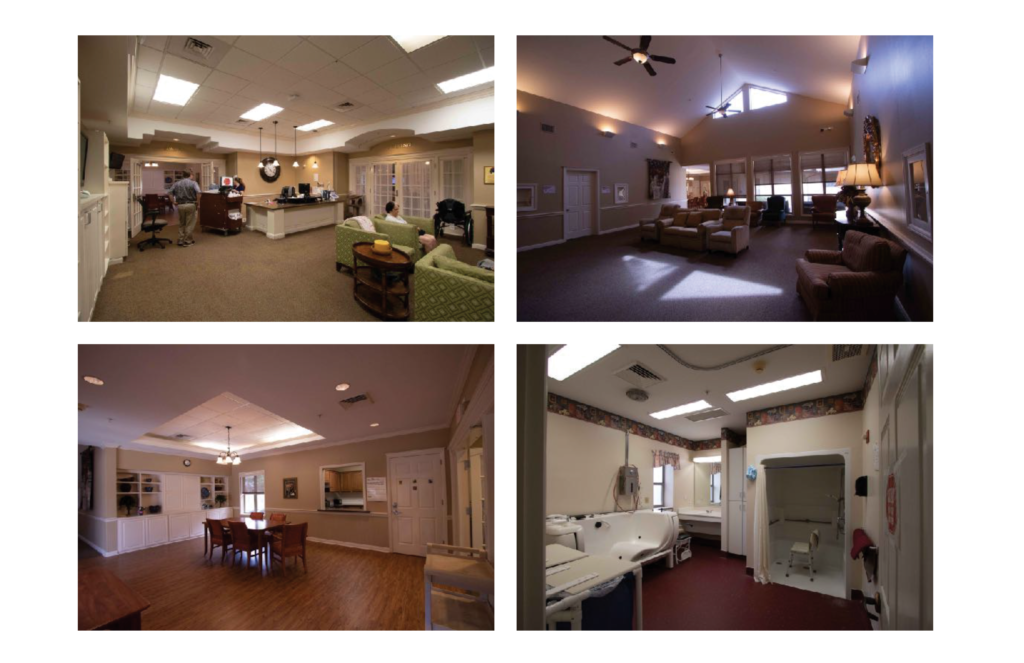
Circadian Lighting Benefits
Research has shown that receiving proper daytime and nighttime light signals can improve alertness, reduce fatigue and depression, improve sleep and productivity. For people with Dementia and Alzheimers, circadian lighting has the ability to improve sleep patterns, help consolidate sleep, and reduce agitation before sunset (also known as sundowning).
We know that seniors receive less exposure to proper daytime light signals because they are less likely to be mobile and less able to go outside independently. Seniors often take naps to compensate for poor nighttime sleep which means they are not getting the important daytime light signal, and they also are experiencing physiological changes that reduce the circadian light signals their brains receive each day. Circadian lighting offers one strategy to help improve their quality of life and reduce some strain on care staff as well.
The Benefits of BIOS Circadian Lighting Solutions
• Circadian lighting systems are beneficial for both residents and staff, helping to provide important daytime light cues that set residents’ and staff internal clocks. Proper daytime light cues have also been shown to reduce nighttime wandering, consolidate sleep (reduce nighttime waking), and reduce negative behavior from residents with dementia — all of which benefits both residents and staff.
• BIOS Circadian Lighting Solutions have a peak blue emission at 490nm, making it the most effective circadian white light solution, and allowing designers to create a visually and biologically appropriate environment for people living with low vision and dementia
• BIOS Circadian Lighting is available in a wide range of lighting profiles — with 30+ BIOS Illuminated Partners — designers maximum can easily a biological lighting solution in the appropriate form factor to meet the design aesthetic.
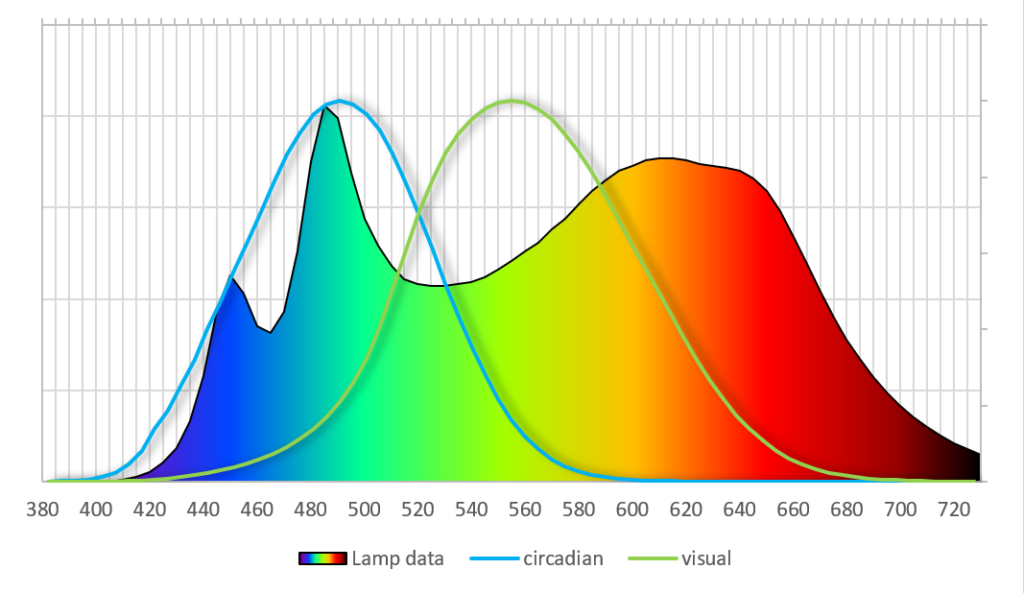
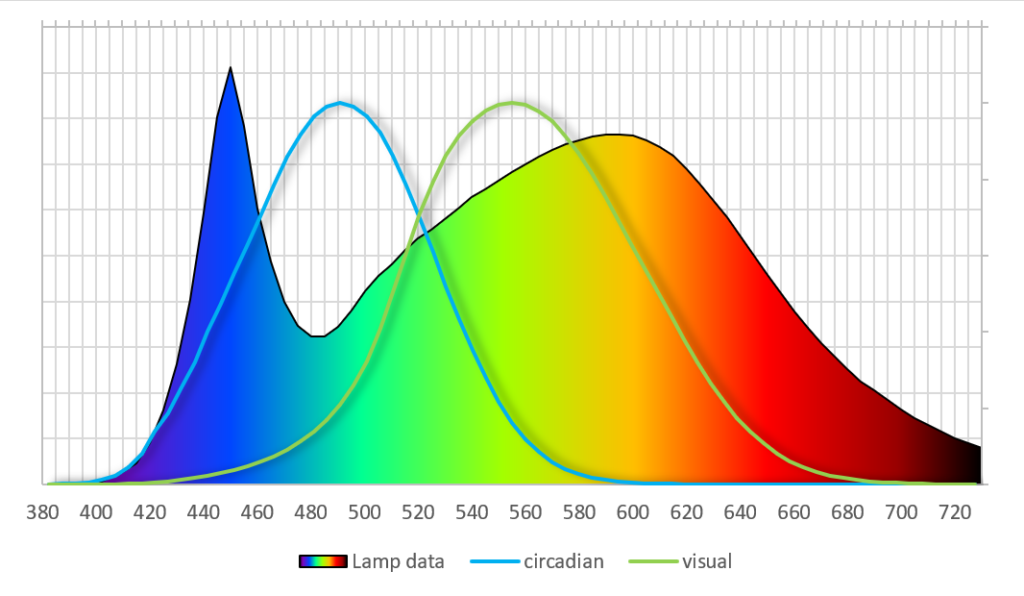
Application of BIOS Circadian Lighting
- BIOS Circadian Lighting was installed in several public spaces throughout Blue Skies of Texas, including: Neighborhood Common Areas, Living Rooms, Dining Rooms, and Bathing Areas.
- BIOS Circadian Lighting Solutions are designed to be simple to use, cost-effective, and uses SkyBlue™ technology to offer the most effective circadian lighting that creates “Brighter Biological Days, Darker Biological Nights”.
- During the day, the lighting for Blue Skies of Texas includes a specific blue sky light signal (490nm) to provide a strong daytime light cue to the residents and staff alike, helping to signal to their brains that it is daytime. In the evening, this blue sky signal is turned off and the intensity of the lights is reduced which creates a biological nighttime signal. Providing clear daytime and nighttime light signals creates a cycle that helps signal to our body that it is time for sleep, encourages the production of melatonin which helps prepare our bodies and minds for sleep.
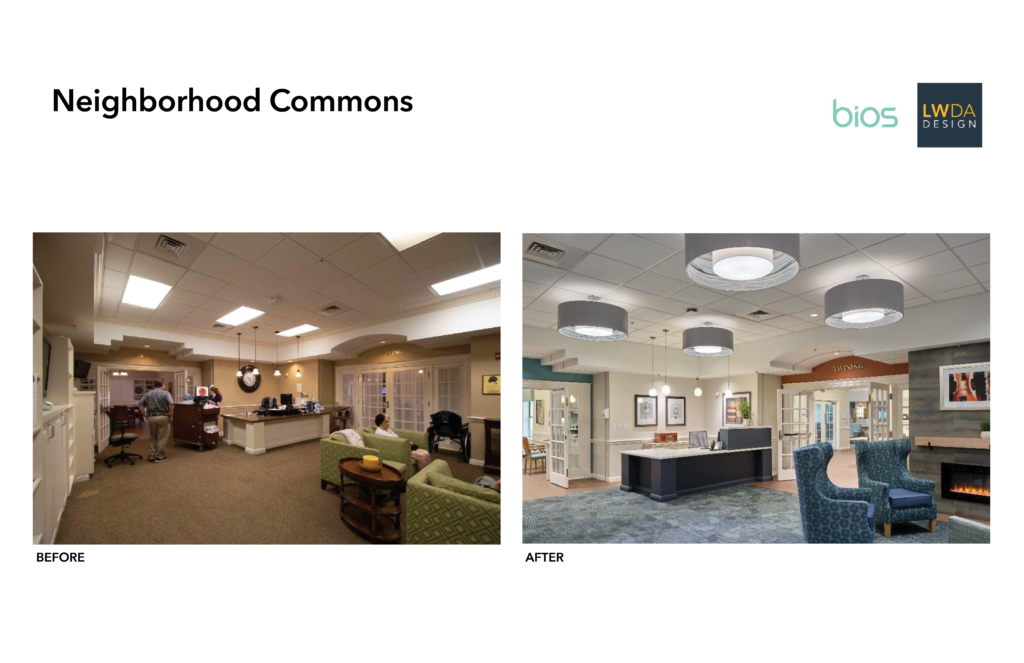
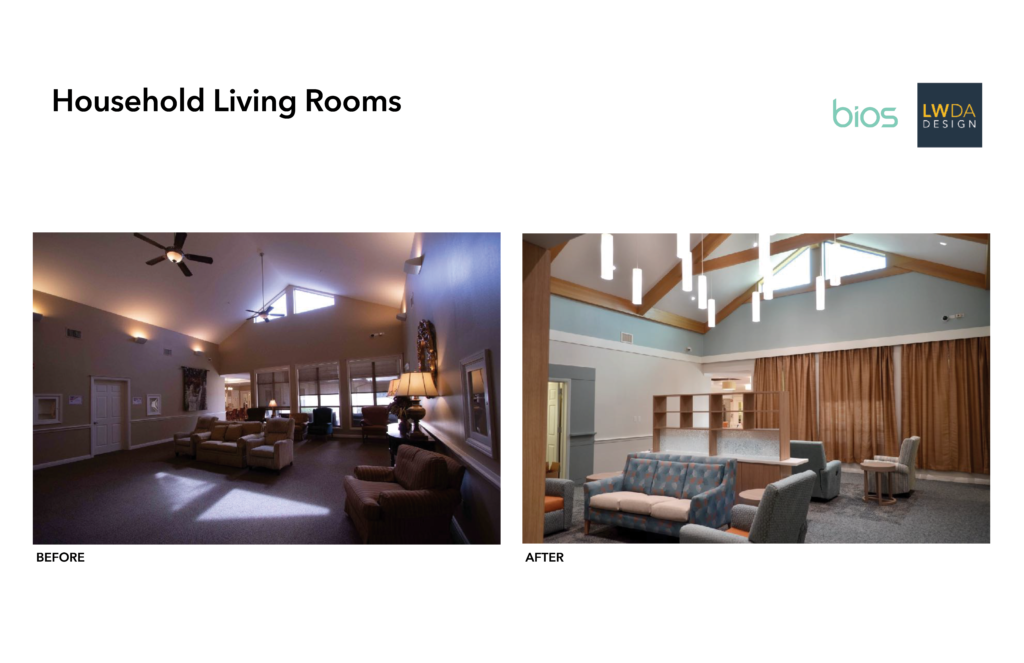

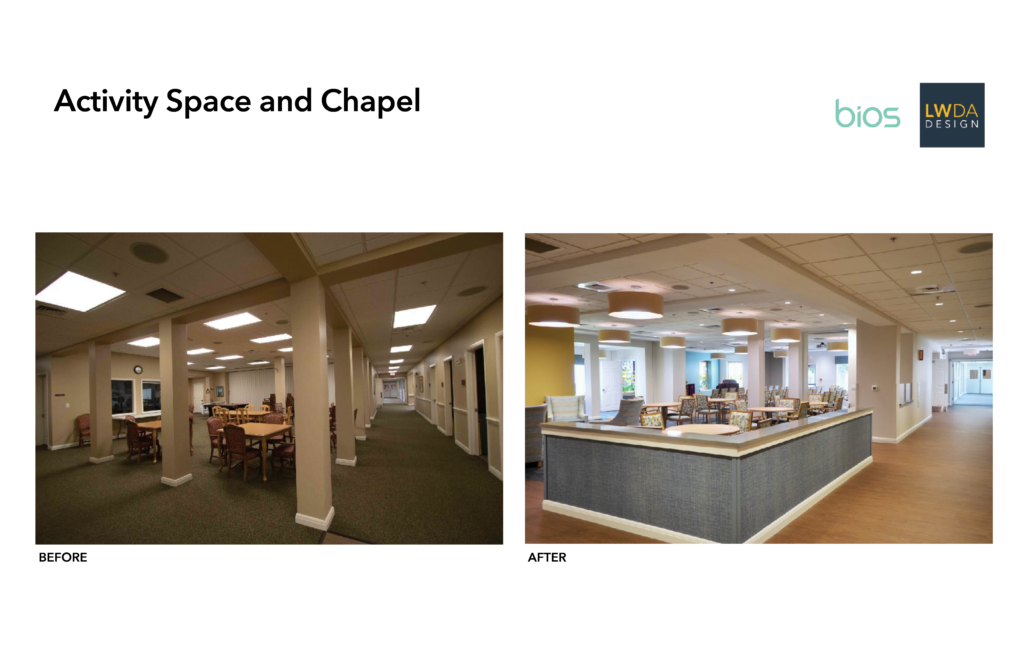

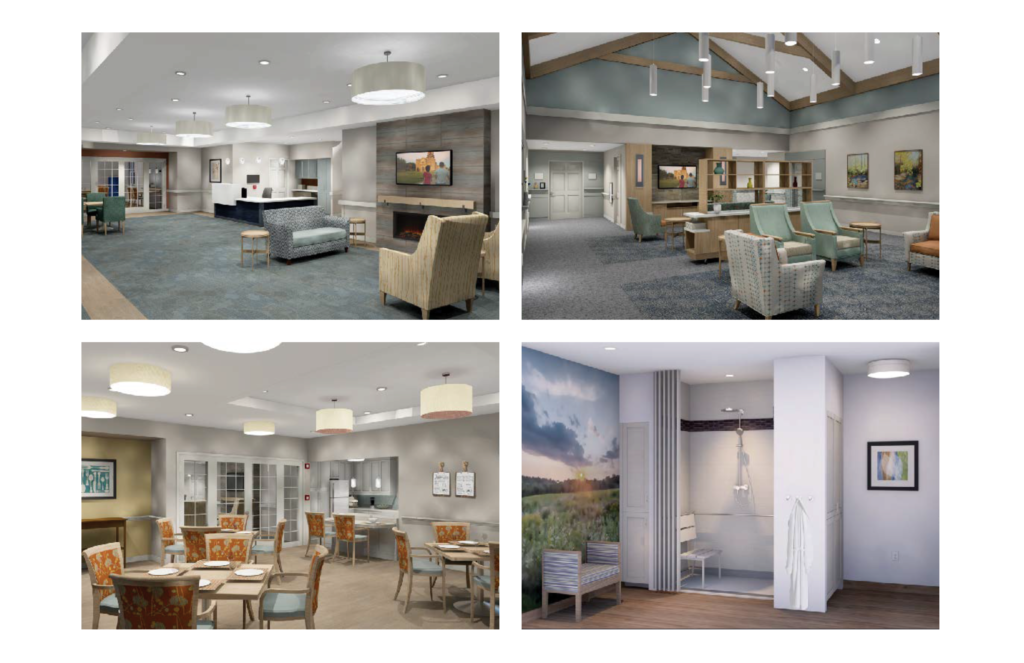
Good Morning!
Very excited for the days leading up to LightFair 2021!
Very insightful seeing many content filled blogs from a diverse amount of companies attending the conference.
– PacLights – LED Industrial & Commercial
Hello Emmanuel,
Thank you so much for checking out the blog and for your comment. We are so glad you like the content.
Yes! We are very excited and looking forward to October and to greeting you and your team in person.
– The LightFair Team